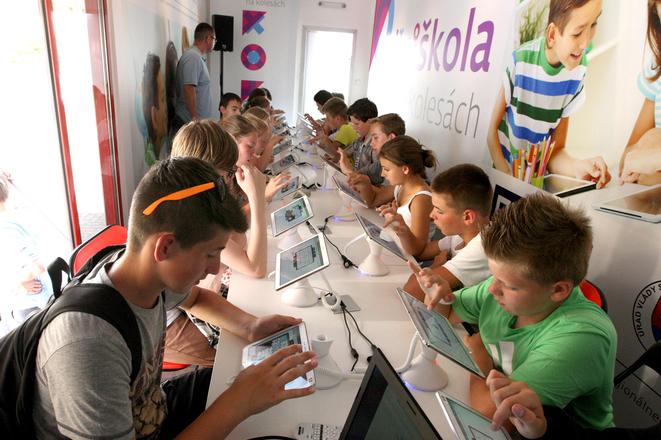Digital skills belong among the most important requirements of employers, right after language skills, experts in HR agree. To find out more about one’s skills in this field, the IT Association of Slovakia (ITAS) prepares an annual test, which has recently been presented in an English version.
IT Fitness Test was first introduced in 2009. Since then it has been attended by more than 120,000 people.
“The original idea was to find out whether the graduates of secondary schools and universities have the IT skills required by employers,” František Jakab, leader of the team that prepares the test, told the April 4 press conference.
The organisers later expanded the test, encouraging especially primary and secondary schools to attend, offering them the possibility to learn more about the skills of their pupils and the areas they should focus on in the curricula.
The first phase of this year’s edition was launched on April 4 and will run through the end of June. ITAS will subsequently use the results for a broad analysis, the association’s chair Mário Lelovský told the press conference.
During the summer the test will continue, also with the possibility to see the correct answers, Lelovský said.
It takes time to fill in the answers
The Slovak test has two versions: one for primary schools and the other for secondary schools, universities, and the broader public. Both are composed of 30 questions divided into six categories focusing on the internet, security and computer systems, collaborative tools and social networks, office tools, comprehensive tasks, and online marketing.
Online marketing is new on the test. It looks into people’s perceptions and responses to various online ads that appear on websites. Other new questions concern the use of collaborative documents, Lelovský explained.
“We always try to reflect the new trends in the digital market on the test,” he told The Slovak Spectator.
The questions are quite comprehensive and it takes time to complete the test. Lelovský supposes it may take 45-60 minutes.
The average score on the last test was some 48 percent. Slovaks lag behind mostly on questions concerning internet security, opening pages, and downloading and uploading content, according to Lelovský.
Schools can compete
The test is open to everybody, regardless of their age or education.
Schools are the main target group. While in previous years schools could compete with one another, comparing the results, this year a new tool was developed. It allows for testing pupils in individual classes, so teachers can find out more about their IT knowledge, Lelovský said.
ITAS also encourages the teachers to use the test at the end of the school year.
“It was composed in a way that the tasks test the skills, specific subject competencies, and also some crucial competencies in IT,” said Jakab.
Moreover, since every participant receives a certificate with the average overall score as well as the scores for individual categories, it may serve as a good basis for improving their skills. This is linked to another new feature of the testing: the participation of the educational platform Digital Garage, held under the auspices of Google. It organises courses to develop IT skills and is available to the broader public.
ITAS also encourages job applicants to take the scores with them to prove their knowledge during an interview. Another potential use of the tests is for those employers who may use it to test applicants, Lelovský said.
English version available
ITAS introduced the English version of the test in October 2016. It, however, does not offer the open variant, which means participants will not see the correct answers.
They will receive the certificate after completing it, however, Lelovský told The Slovak Spectator.
Moreover, ITAS offers this version to be used in other countries. It has already been used in the Czech Republic, and some pilot tests were carried out in Russia and Belarus in the past, said Jakab.
Moreover, the test is ready to be applied in more countries. Local organisations can address ITAS with their questions, and then just translate it into their language, Lelovský explained.
“Also in this way we want to show that a small, not fully digitalised country can offer something good,” Lelovský said.



 Illustrative stock photo (source: SME)
Illustrative stock photo (source: SME)